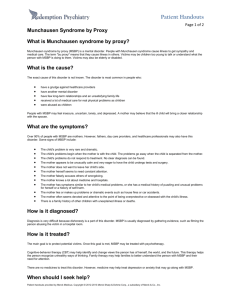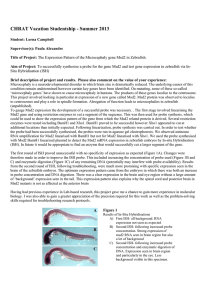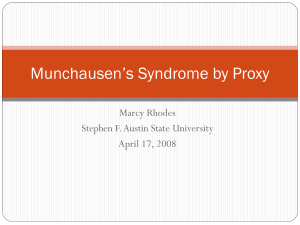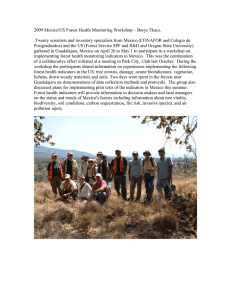Mexico guide
advertisement
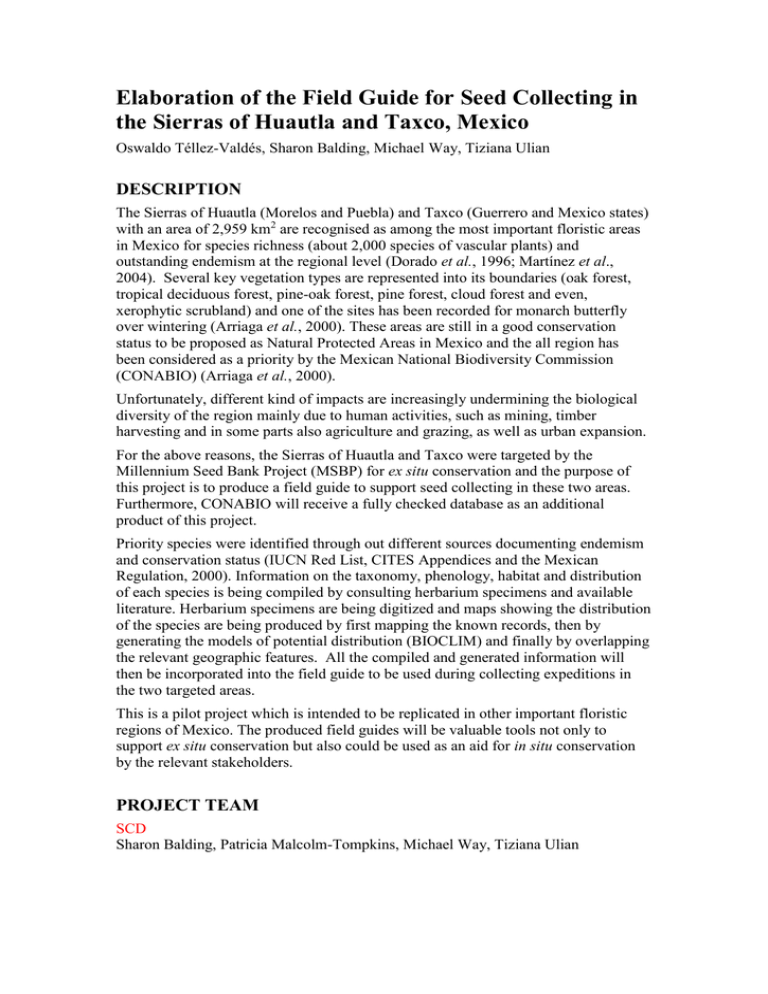
Elaboration of the Field Guide for Seed Collecting in the Sierras of Huautla and Taxco, Mexico Oswaldo Téllez-Valdés, Sharon Balding, Michael Way, Tiziana Ulian DESCRIPTION The Sierras of Huautla (Morelos and Puebla) and Taxco (Guerrero and Mexico states) with an area of 2,959 km2 are recognised as among the most important floristic areas in Mexico for species richness (about 2,000 species of vascular plants) and outstanding endemism at the regional level (Dorado et al., 1996; Martínez et al., 2004). Several key vegetation types are represented into its boundaries (oak forest, tropical deciduous forest, pine-oak forest, pine forest, cloud forest and even, xerophytic scrubland) and one of the sites has been recorded for monarch butterfly over wintering (Arriaga et al., 2000). These areas are still in a good conservation status to be proposed as Natural Protected Areas in Mexico and the all region has been considered as a priority by the Mexican National Biodiversity Commission (CONABIO) (Arriaga et al., 2000). Unfortunately, different kind of impacts are increasingly undermining the biological diversity of the region mainly due to human activities, such as mining, timber harvesting and in some parts also agriculture and grazing, as well as urban expansion. For the above reasons, the Sierras of Huautla and Taxco were targeted by the Millennium Seed Bank Project (MSBP) for ex situ conservation and the purpose of this project is to produce a field guide to support seed collecting in these two areas. Furthermore, CONABIO will receive a fully checked database as an additional product of this project. Priority species were identified through out different sources documenting endemism and conservation status (IUCN Red List, CITES Appendices and the Mexican Regulation, 2000). Information on the taxonomy, phenology, habitat and distribution of each species is being compiled by consulting herbarium specimens and available literature. Herbarium specimens are being digitized and maps showing the distribution of the species are being produced by first mapping the known records, then by generating the models of potential distribution (BIOCLIM) and finally by overlapping the relevant geographic features. All the compiled and generated information will then be incorporated into the field guide to be used during collecting expeditions in the two targeted areas. This is a pilot project which is intended to be replicated in other important floristic regions of Mexico. The produced field guides will be valuable tools not only to support ex situ conservation but also could be used as an aid for in situ conservation by the relevant stakeholders. PROJECT TEAM SCD Sharon Balding, Patricia Malcolm-Tompkins, Michael Way, Tiziana Ulian PROJECT PARTNERS AND COLLABORATORS Mexico Dr. Oswaldo Téllez Valdés (UBIPRO, UNAM) FUNDERS United Kingdom: MSBP Links to other projects: Aloes of Madagascar Madagascar GIS GIS MSBP Botswana MSBP Burkina Faso MSBP Chile MSBP Jordan MSBP Kenya MSBP Lebanon MSBP Madagascar MSBP Mali MSBP Malawi MSBP Mexico MSBP South Africa MSBP Tanzania
